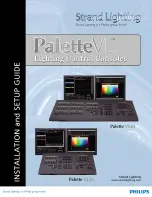
9
TWIN
MONO input channel
MIC
1
PAN
MON
HIGH
LOW
GAIN
ì
L
0
0
0
10
-
15
-
15
-
15
R
L
15
0
10
0
10
0
10
4
4
0
0
1
10
-
20
-
15
-
45
-
15
15
-
15
ì
P
E
A
K
REV
AUX1
MON
MULTI
AUX2
LINE
b) EQ Section
The MONO input channel has a
built-in signal processing section
which enables regulation of the tone characteristics of the original signal.
This section comprises a
2-band equalizer:
High & Low. The pots
controlling the EQ amplitude are
centre-dented
to facilitate zeroing.
The equalizer section is POST-GAIN, so has effect on the signal after it has
been amplified by the gain control. Any excessive boosting (particularly on
the low frequencies) could cause the PEAK LED to light up.
HIGH
HIGH frequency control:
gives
a 15dB boost or cut with turnover
frequency at 10 kHz
. This EQ control has a
SHELVING curve.
With
SHELVING curves,
the boost or cut of the amplitude of the various
frequencies follow an upward curve which goes from a minimum value (in
this case 1kH
z)
, at which there is
minimum amplitude intervention (±0
dB)
, to a reference value (in this case
10 kHz
), at which there is an
amplitude
intervention of ±15dB
. If you want a brighter, clearer sound, turn the pot to the right
(+). If on the other hand, the sound is annoyingly treble or metallic, turn it to the left (-).
LOW
LOW frequency control:
gives
15dB boost or cut with a 70Hz turnover
frequency.
This equalizer control acts exactly like the HI control
(SHELVING curve),
the only difference being that the turnover
frequency is set at 70Hz.
Using this control, a more full-bodied sound can be obtained, or booming
or unpleasant effects due to excessive low frequencies can be eliminated.
Summary of Contents for TWIN SERIES
Page 1: ...CODE 277 301 TWIN SERIES AUDIO MIXING CONSOLES MANUALE D USO Italiano OWNER S MANUAL English...
Page 35: ...33 TWIN Diagrammi Schema a blocchi...
Page 36: ...34 TWIN Diagrammi Diagramma dei livelli...
Page 69: ...33 TWIN Diagrams Block diagram...
Page 70: ...34 TWIN Diagrams Level diagram...
















































